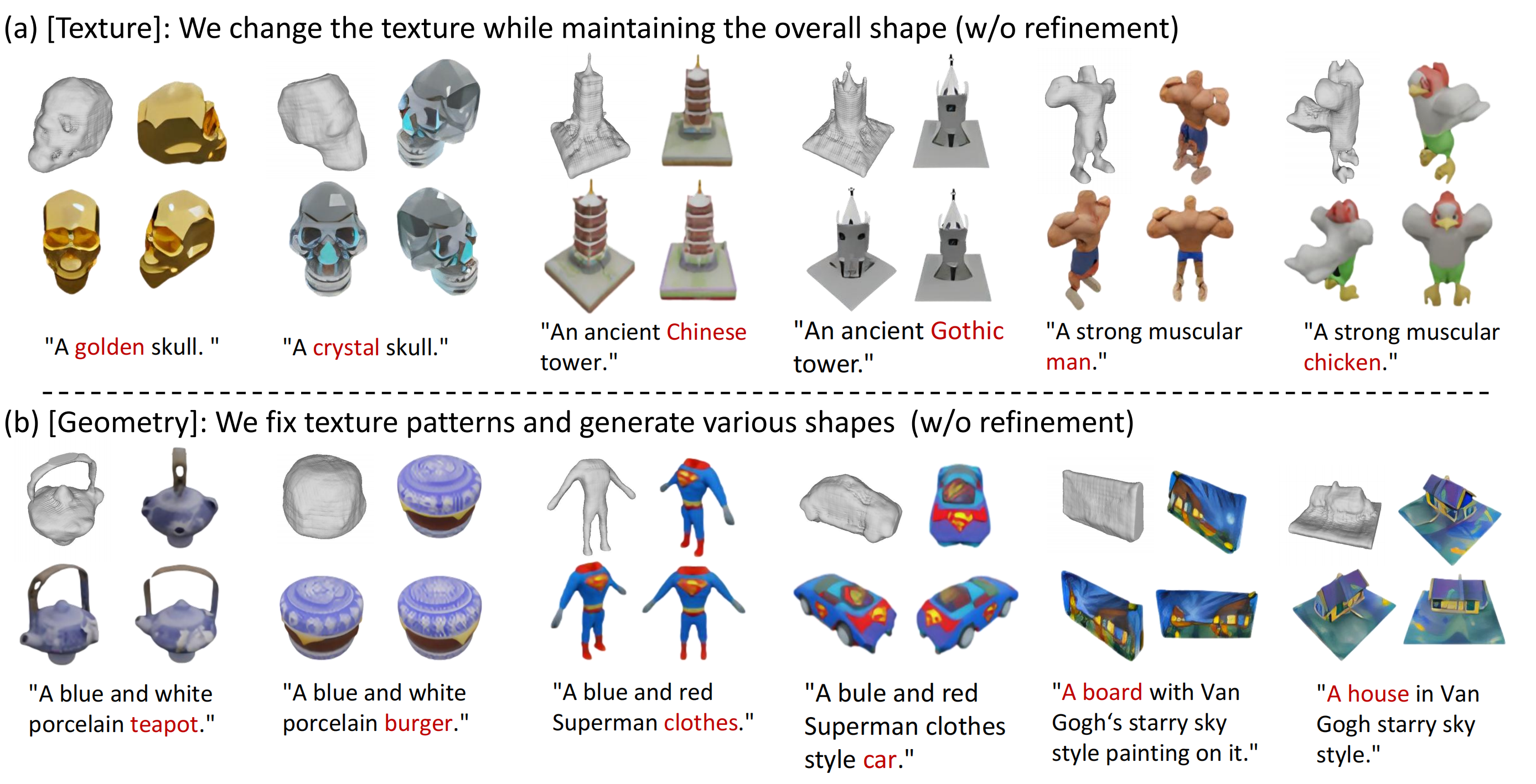Abstract
Most 3D generation research focuses on up-projecting 2D foundation models into the 3D space, either by minimizing 2D Score Distillation Sampling (SDS) loss or fine-tuning on multi-view datasets. Without explicit 3D priors, these methods often lead to geometric anomalies and multi-view inconsistency. Recently, researchers have attempted to improve the genuineness of 3D objects by directly training on 3D datasets, albeit at the cost of low-quality texture generation due to the limited texture diversity in 3D datasets. To harness the advantages of both approaches, we propose Bidirectional Diffusion (BiDiff), a unified framework that incorporates both a 3D and a 2D diffusion process, to preserve both 3D fidelity and 2D texture richness, respectively. Moreover, as a simple combination may yield inconsistent generation results, we further bridge them with novel bidirectional guidance. In addition, our method can be used as an initialization of optimization-based models to further improve the quality of 3D model and efficiency of optimization, reducing the process from 3.4 hours to 20 minutes. Experimental results have shown that our model achieves high-quality, diverse, and scalable 3D generation.
Decoupled Geometry and Texture Control
